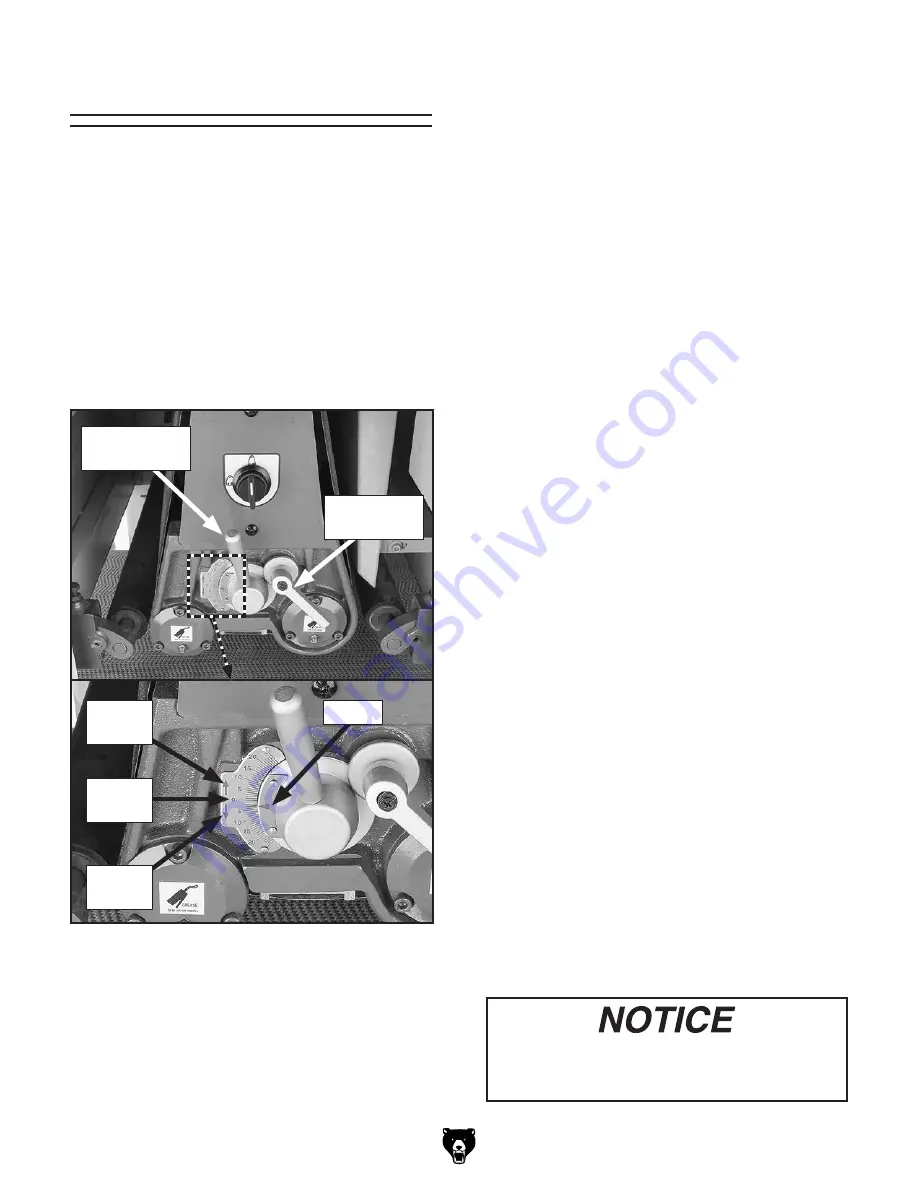
Model G0819 (Mfd. Since 09/16)
-27-
Adjusting Platen
If workpiece has straight notches across it,
graphite cloth and felt have worn out and
need to be replaced immediately.
Unlike the sanding belt, which typically produces
short but deep scratch patterns, the platen pro-
duces long and shallow scratch patterns that
create a smoother finish. Due to its cushioned-
construction, the platen is less likely to leave belt-
splice or chatter marks.
However, we do not recommend lowering the
platen depth more than 2mm or over-using the
platen by expecting it to remove marks beyond its
ability to do so, since this can reduce the life of the
sanding belt and platen, and result in premature
streaking.
Tip: Given the short life-span of most graphite
pads, it is a good idea to keep replacement pads
on hand.
Platen Up: The platen is raised above the level
of the drums (typically set at 1.5mm UP), so
only the sanding drums are making contact with
the workpiece. This position is typically used
for heavy sanding passes or dimensioning. The
drums do all the work, but you will have a rough
finish. Typically platens are used in this position
with #100 or coarser grit.
Platen Even: The platen is set level with the
drums. This position is used for intermediate-fin-
ishing passes. The depth of cut should not exceed
0.010". This position typically uses #100–#150
grit.
Platen Down: The platen is set below the level of
the drums so it is the primary contact point while
performing finish sanding.
The platen should be lowered to 0.2 to 0.5mm
(maximum) below the sanding drums, but not
more than 0.2mm per pass. You can lower the
platen up to 2 mm below the drums for short inter-
vals, but streaking, burn marks, and premature
graphite/platen wear can occur if this setting is
abused or over-used.
It is not necessary to use the table height
handwheel to adjust the sanding depth during the
final sanding pass—the platen movement alone
will take care of the depth of cut. Typically the
final-sanding pass position uses #180 or finer.
Note: The platen scale is broken down in 0.1mm
increments (approximately 0.004").
Figure 33. Platen height scale controls and
positions.
Platen Height
Lever
Platen Lock
Lever
Pointer
This sander is equipped with an adjustable platen
with a graphite pad that is designed to be used
during finish sanding to create a polished-type
finish and to prepare the workpiece for orbital
sanding or a finish coat.
The platen position allows for 3 basic types of
sanding: up, even, and down, which are adjusted
by unlocking the platen lock lever and rotating the
scale pointer arrow with the height lever shown
in
Figure 33
to the desired position. The setting
is secured for the sanding operation with the lock
lever.
Up
Position
Even
Position
Down
Position
Содержание G0819
Страница 84: ......






























